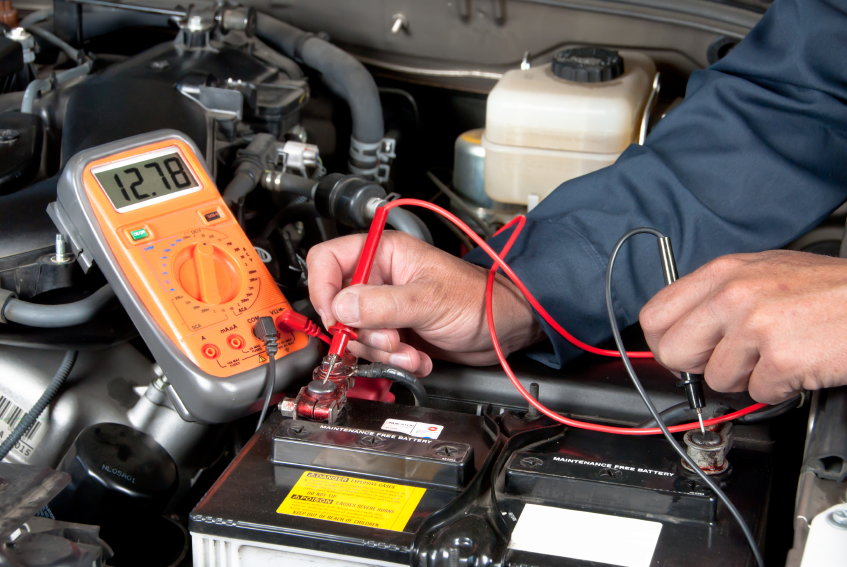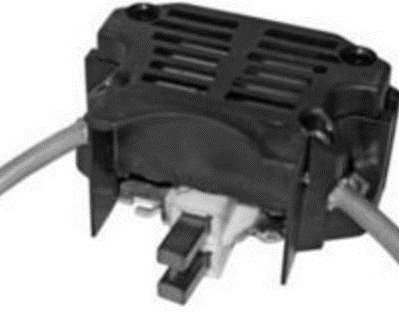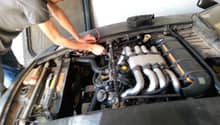Porsche 928: Why Is My Battery Not Charging?
Here are a few reasons why your Porsche 928 might not be paying back the electricity it's using.
This article applies to the Porsche 928 (1978-1995).
The electrical system on your car is pretty crucial to making sure that it operates correctly. With all of the stress put on the electrical system by an array of onboard electronics, a healthy charging system is a key element in making sure that everything is operating as it is designed to. Charging system problems can be quite frustrating and most times never give us an indication that they are about to fail. One day everything is working, and the next, it's not. The first thing we always do is swap the battery. But what if that doesn't fix the problem? Where do we go next? This article touches on a few other components to check so that the next time you have a charging system problem, it might be a bit easier to diagnose.

Materials Needed
- Wiring diagram
- Multi meter
- Test light
- Continuity tester
Before getting started on troubleshooting your car's charging system. It's a good idea to get a basic understanding for how it works. Your car has a 12V electrical supply, the battery. The battery is Direct Current (DC) and makes sure that everything that is powered by electricity on the car has a constant supply of 12V power. As that power is used, it must be replenished. This is where the charging system comes in. Your engine turns an alternator with a belt. This alternator has a winding and magnetic field that generates Alternating Current (AC). The AC electricity that your alternator produces must be converted to DC electricity so that your battery can store it.
This is where your Voltage Regulator comes in. The Voltage Regulator not only regulates voltage as the name suggests but it also rectifies (converts) the AC electricity to DC electricity. To sum it up: these 3 components must be working correctly in order for the charging system to do it's job correctly. If they are not, then no charging will be done and you will eventually have a flat battery and no electricity. Also keep in mind that wiring is a component in all of this.
Step 1 – Check each component
When troubleshooting any charging system issue the first thing that I always do is make sure that everything is connected and set up the way it is designed to be. Who knows? A wire could have come loose, or maybe even a small animal has decided that it wanted to add electrical wiring to its diet.
- Go over all the connections to make sure that they are tight and corrosion free. You must also have a good, solid ground in order to have a healthy electrical circuit.
- Check the connection to the alternator and make sure it didn't wiggle loose or somehow broke the connector. The plastics on older vehicles tend to get fragile over time and can break causing a loss in connection.
- Also make sure to check that the belt that is driving the alternator nice and tight.

Step 2 – Check the voltage on the battery
Making sure that the vehicle is turned off first, use a multi meter to check the voltage on the battery. The shop manual should give you a range of what the battery should have voltage-wise with the car turned off. All vehicles require a certain amount of power to turn on and run all the systems to start the car. Usually if you perform this check and find that the voltage is below what it should be, it either means that you need a new battery or need to give the battery an external charge somehow to give the battery the power it needs.
If the battery voltage is within limits, go ahead and turn the key to the "On" position, but don't start the car, and then take another voltage reading. The voltage should have dropped from the first reading. This is because the car is using electricity to run all of the other electrical components of the car and is now putting a drain on the battery. There will be another reading that the manual will give you of what the voltage should be within. If the battery voltage drops below what is required, you more than likely need a new battery.
If the battery voltage is within limits, go ahead and start the car and take another voltage reading. The voltage should at this point be higher than when you took the reading with the car not running. If it is, then you know that your alternator and voltage regulator are doing their jobs. If it is not, then you know that either your alternator is not working properly or your voltage regulator is not working properly.

Pro Tip
If you don't drive your car often, keeping it on a trickle charger will help to ensure that the battery has a good charge for whenever you go to use it.
Step 3 – Check the alternator and voltage regulator
If you find that when you start the car the voltage drops and doesn't rise back up, it is very possible that you have a bad alternator or bad voltage regulator. On early 928s, the Voltage Regulator is part of the Alternator and not replaceable. In later model years, they ended up making it a replaceable component.
On those later models it is attached to the alternator with two screws. If you remove the two screws, you can remove the voltage regulator. The voltage regulator will have two brushes that it uses as contacts to interact with the alternator. Over time, these contacts can wear out to the point where they are not contacting the alternator anymore. When this happens, the charging system will not operate correctly.

If you have an early alternator with a voltage regulator that cannot be removed, you can remove the alternator from the car and take it to have it tested. Most auto parts stores have the ability to check alternators and put load on them to see if they are working correctly. They usually even do this for free. There are even auto electric specialists that do even more checks to tell you exactly what is failing on the alternator if you want to take the time to do so.
Remember, these are the basic checks you can perform to see if you can diagnose what your charging system issue might be. It is possible that there could be another issue but that it will require more research and more complicated troubleshooting measures.
Related Discussions
- Alternator Not Charging - Rennlist.com
- Alternator Not Charging Battery - Rennlist.com
- Battery Not Charging - Rennlist.com






